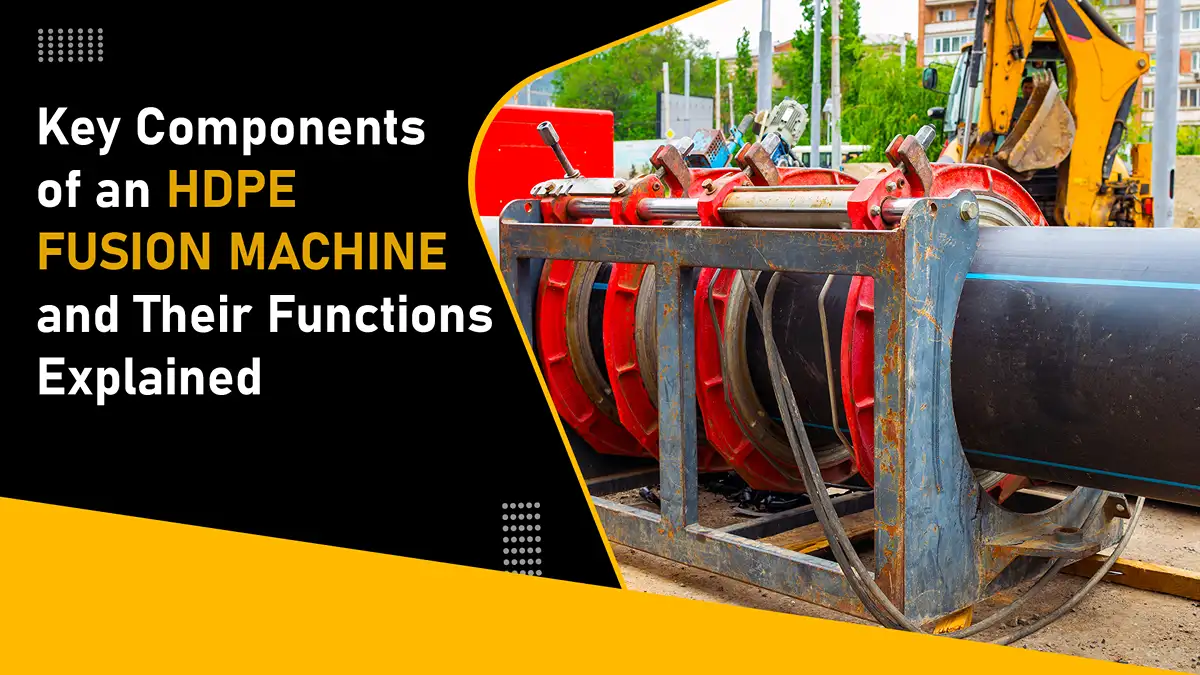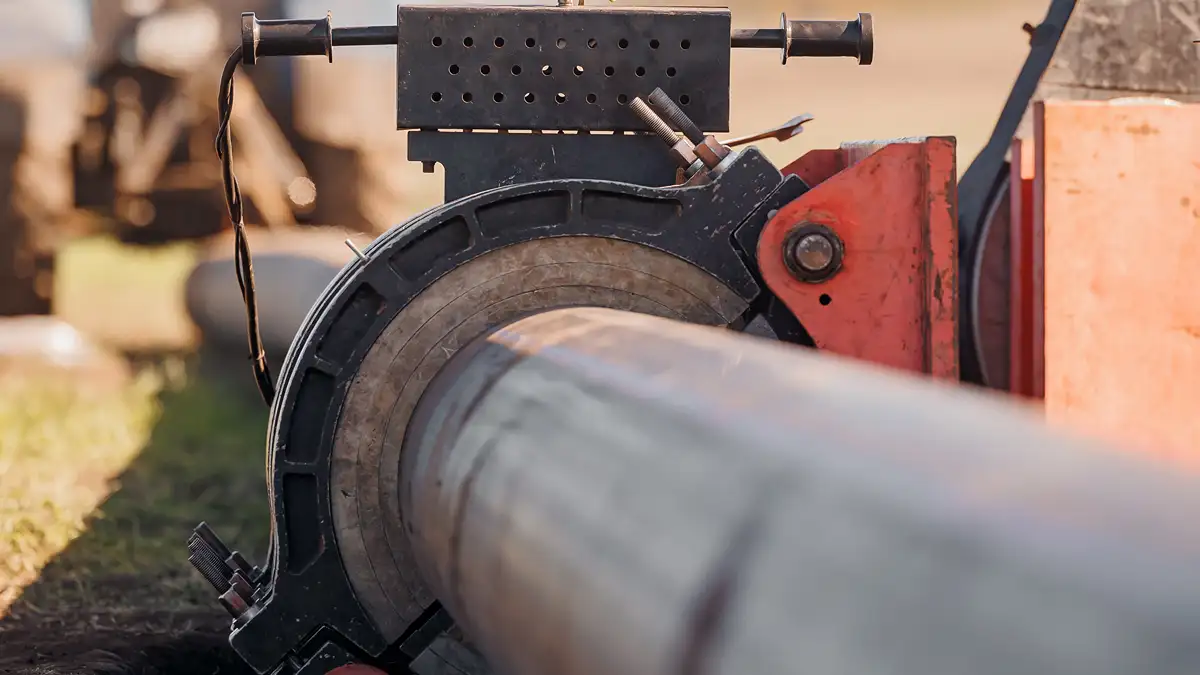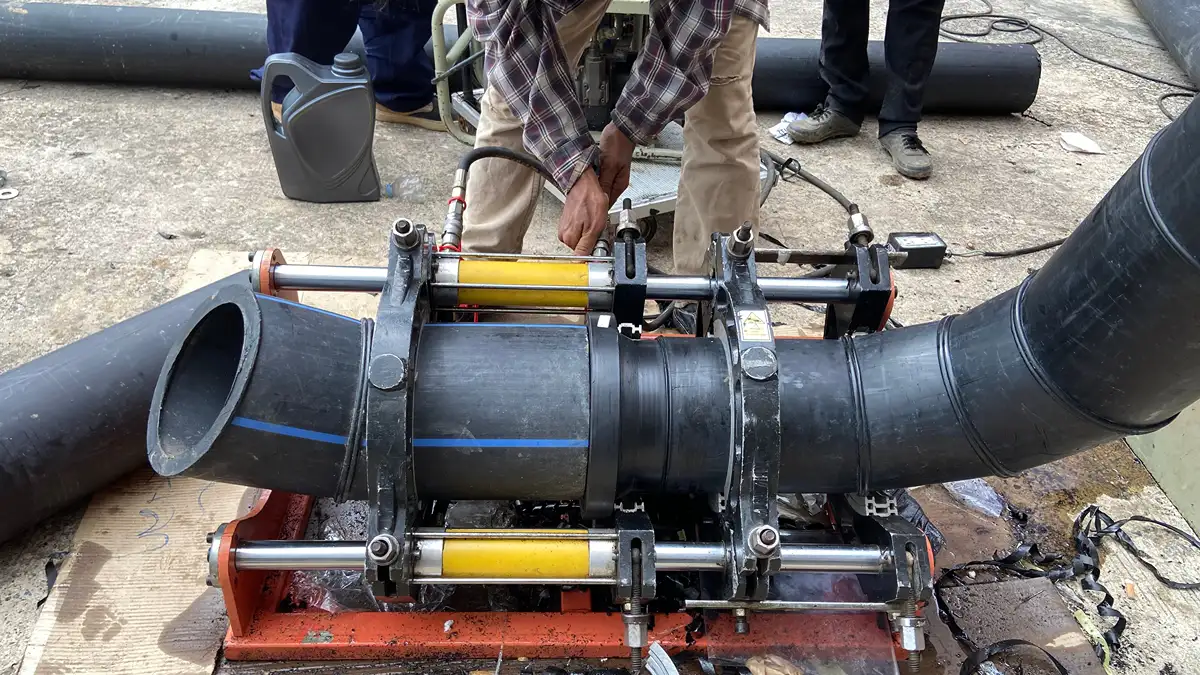
HDPE Fusion Machine Parts & Functions Explained
- Introduction
- Understanding the HDPE Fusion Machine
- Key Components of an HDPE Fusion Machine
- How HDPE Fusion Works: From Setup to Solid Joint
- Performance and ROI Benefits for Industrial Projects
- Maintenance and Best Practices for Reliability
- Maximizing Project Success with the Right HDPE Fusion Machine
- Introduction
- Understanding the HDPE Fusion Machine
- Key Components of an HDPE Fusion Machine
- How HDPE Fusion Works: From Setup to Solid Joint
- Performance and ROI Benefits for Industrial Projects
- Maintenance and Best Practices for Reliability
- Maximizing Project Success with the Right HDPE Fusion Machine
Introduction
An HDPE fusion machine is a critical piece of equipment for industries that rely on durable and leak-proof pipeline systems. Designed to join high-density polyethylene (HDPE) pipes using controlled heat and pressure, these machines are the backbone of hdpe pipe fusion processes. By creating seamless, homogenous joints, they eliminate the need for mechanical fittings or adhesives, ensuring reliable performance in demanding environments.
For decision-makers in oil and gas, mining, municipal water, and defense projects, selecting the right HDPE fusion equipment directly impacts project safety, operational efficiency, and lifecycle costs. In applications such as dredging, floating pipelines, or municipal water distribution, every joint must withstand pressure, environmental stress, and long-term exposure to chemicals or abrasive materials. A well-selected fusion machine helps reduce the risk of leaks, environmental damage, and costly unplanned maintenance.
Beyond operational reliability, an HDPE fusion machine offers a strong return on investment. Its ability to produce long-lasting, leak-proof connections minimizes downtime and maintenance expenses while extending the service life of the pipeline system. For industries where continuous operation is critical, investing in robust fusion technology ensures projects are completed on time, within budget, and with confidence in long-term performance.
Understanding the HDPE Fusion Machine
An HDPE fusion machine is a specialized piece of equipment engineered to join high-density polyethylene (HDPE) pipes into a single, continuous pipeline. Its primary purpose is to create strong, leak-proof joints by heating and fusing pipe ends under precise pressure and temperature conditions. In large-scale infrastructure, industrial, and utility projects, this equipment is indispensable because it ensures pipeline integrity over decades of service.
The HDPE pipe fusion process works by softening the pipe ends with a heated plate and then pressing them together under controlled force until they bond into a single, homogeneous piece. This method eliminates gaps, weak spots, and potential leak paths, resulting in durable and maintenance-free connections. Whether the application is transporting water, chemicals, slurries, or fuel, properly executed fusion guarantees reliability under high pressure and challenging environmental conditions.
Compared to alternative joining methods such as mechanical couplings or traditional metal welding, HDPE fusion equipment offers several advantages:
- Seamless and leak-proof joints without the need for gaskets or adhesives.
- Corrosion resistance is superior to metal connections, which degrade in harsh environments.
- Lower maintenance costs, as fused joints are less prone to failure.
- An extended pipeline lifespan makes it ideal for industries with high operational and environmental demands.
By leveraging an HDPE fusion machine, project teams can achieve a balance of performance, safety, and cost efficiency, making it the preferred choice for modern industrial and municipal pipeline systems.
Key Components of an HDPE Fusion Machine
A high-performing HDPE fusion machine is built from several critical components that work together to deliver strong, leak-proof pipeline joints. Each part of the machine plays an essential role in ensuring that industrial and municipal pipelines operate reliably under pressure and environmental stress. For procurement managers, project contractors, and engineers, understanding these components helps in selecting a machine that maximizes operational efficiency and return on investment.
1. Main Machine Body (Chassis)
The chassis is the foundation of the HDPE fusion machine, providing structural support for all moving and clamping components.
- Function: Keeps pipes properly aligned throughout the fusion cycle, preventing joint misalignment.
- Industry Benefit: In oil and gas or mining projects, precise alignment prevents costly leaks and pipeline failures.
- Procurement Note: Look for machines with a rigid, corrosion-resistant frame for long-term field use.
2. Pipe Clamps and Clamp Inserts
Clamps and inserts secure HDPE pipes during the fusion process.
- Function: Prevents pipe movement, ensuring smooth, end-to-end alignment.
- Industry Benefit: Stable clamping is critical in field conditions such as dredging or uneven terrain.
- Procurement Note: Machines with interchangeable inserts accommodate multiple pipe diameters efficiently.
3. Heating Plate (Pipe Heater)
The heating plate is the heart of the HDPE fusion machine, responsible for melting the pipe ends.
- Function: Heats pipe ends to approximately 200–230°C to achieve the correct bonding temperature.
- Industry Benefit: Even controlled heating creates long-lasting joints resistant to high pressure and chemicals.
- Procurement Note: Choose models with non-stick coatings and digital temperature controls for precision.
4. Trimming or Facing Unit
Also known as the facer, this unit prepares the pipe ends for fusion.
- Function: Removes irregularities and ensures smooth, parallel pipe ends before heating.
- Industry Benefit: Proper trimming ensures high-strength joints for long-term industrial reliability.
- Procurement Note: Durable, sharp-faced units save setup time and improve joint consistency.
5. Hydraulic or Manual Control Unit
The control unit applies and maintains the correct pressure during the fusion process.
- Function: Provides controlled force for heating, joining, and cooling stages.
- Industry Benefit: Consistent pressure guarantees a strong, single-piece joint.
- Procurement Note: Hydraulic systems are preferred for larger projects, while manual units suit smaller, portable applications.
6. Pressure Gauge and Monitoring Instruments
These tools ensure the fusion process is executed within safe and effective pressure parameters.
- Function: Displays and verifies applied force to prevent weak or over-pressurized joints.
- Industry Benefit: Accurate monitoring reduces the risk of leaks in mission-critical applications.
- Procurement Note: Digital pressure monitoring increases reliability and simplifies QA/QC documentation.
7. Control Panel / Operation System
This is the operator’s interface for managing the HDPE fusion machine.
- Function: Controls temperature, pressure, and fusion timing for consistent performance.
- Industry Benefit: Automated or semi-automatic systems boost efficiency in large-scale projects like municipal water distribution or floating pipelines.
- Procurement Note: Machines with digital displays and automated features improve safety and reduce operator error.
How HDPE Fusion Works: From Setup to Solid Joint
The performance and reliability of any HDPE pipeline system rely heavily on how the HDPE fusion machine is operated. The HDPE pipe fusion process involves a series of precise, controlled steps designed to create seamless, leak-proof joints that can withstand high pressure, environmental stress, and decades of service. By using the right HDPE fusion equipment, contractors and industrial teams can ensure long-term pipeline performance with minimal maintenance.
Step 1: Preparation and Pipe Cleaning
The process begins by positioning the HDPE pipes into the clamps of the HDPE fusion machine. Operators clean the pipe ends thoroughly to remove any dirt, debris, or surface oxidation that could compromise the joint. Proper preparation is critical in HDPE pipe fusion, as contaminants can weaken the bond and lead to future leaks.
Step 2: Facing or Trimming
Once the pipes are secured, the trimming or facing unit of the HDPE fusion equipment is engaged. This step ensures that the pipe ends are smooth, even, and perfectly aligned. A precise face-off eliminates gaps and ensures full-surface contact, which is essential for producing a high-strength, leak-proof fusion joint.
Step 3: Heating the Pipe Ends
Next, the heating plate of the HDPE fusion machine is inserted between the aligned pipes. The pipe ends are pressed against the plate and heated to the fusion temperature—typically around 200–230°C. This controlled heating softens the HDPE material, preparing it for bonding without degrading its structural integrity. Consistent heat application is a key factor in achieving reliable HDPE pipe fusion.
Step 4: Fusion or Joining
Once the proper melt has been achieved, the heating plate is carefully removed, and the softened pipe ends are immediately pressed together using the machine’s hydraulic or manual pressure system. The HDPE fusion equipment applies controlled force to create a homogeneous, leak-proof joint without gaps or voids. Correct pressure is crucial—too little may weaken the bond, and too much can deform the pipe.
Step 5: Cooling and Solidification
The joint is held under pressure for a designated cooling period, allowing the molten HDPE to solidify into a single, continuous piece. During this step, the HDPE fusion machine ensures the joint remains stable and properly aligned. This final cooling phase is essential for achieving a long-lasting, high-performance pipeline connection that meets industrial standards.
Following this HDPE pipe fusion sequence guarantees that every joint is uniform, durable, and resistant to leakage. When executed with the right HDPE fusion equipment, the process minimizes environmental risk, extends pipeline life, and delivers a strong return on investment for large-scale industrial and municipal projects.
Performance and ROI Benefits for Industrial Projects
Investing in the right HDPE fusion machine provides measurable performance and financial advantages for industries where reliability and efficiency are critical. From oil and gas pipelines to mining operations, municipal water systems, and defense infrastructure projects, the use of advanced HDPE fusion equipment ensures that pipelines operate with minimal downtime and deliver long-term cost savings.
1. Leak-Proof and Maintenance-Free Performance
The core advantage of HDPE pipe fusion is the creation of seamless, leak-proof joints. Unlike mechanical couplings or gasketed fittings, a properly fused joint forms a single, homogenous piece of pipe. This eliminates the most common failure points in a pipeline, reducing the need for unplanned maintenance or emergency repairs. For industries moving water, fuel, slurry, or chemicals, this translates to higher operational uptime and lower risk of environmental incidents.
2. Extended Service Life and Durability
An HDPE fusion machine produces joints that can withstand high pressures, ground movement, and harsh environmental conditions. Hdpe fusion equipment is especially valuable in mining and dredging projects, where pipelines are exposed to abrasion and fluctuating loads. Properly fused HDPE pipelines have a service life exceeding 50 years, making them a long-term infrastructure investment with superior lifecycle performance.
3. Cost Savings Across the Project Lifecycle
By minimizing joint failures, leak incidents, and frequent maintenance, HDPE pipe fusion reduces both direct repair costs and indirect losses caused by operational downtime. The upfront investment in quality HDPE fusion equipment quickly pays off through lower total cost of ownership, fewer project delays, and reduced environmental risk exposure.
4. Compliance and Safety for Industrial and Municipal Applications
Industrial buyers and government agencies often require infrastructure solutions that meet strict safety and reliability standards. Pipelines constructed with an HDPE fusion machine provide superior joint integrity, helping projects comply with municipal, environmental, and industry regulations. This is particularly beneficial for defense, naval, and municipal water applications, where failure is not an option.
By leveraging a well-selected HDPE fusion machine, project owners gain a high-performance, cost-effective pipeline solution that maximizes return on investment while minimizing operational risks. Hdpe pipe fusion technology ensures that each joint is as strong as the pipe itself, providing confidence in long-term reliability for mission-critical industrial and municipal projects.
Maintenance and Best Practices for Reliability
Even the most advanced HDPE fusion machine requires regular maintenance to ensure consistent performance and long-term reliability. Proper care of HDPE fusion equipment not only extends its service life but also guarantees that HDPE pipe fusion joints remain strong, leak-proof, and compliant with industrial standards. For procurement teams and project managers, following best practices translates directly into reduced downtime, lower repair costs, and maximized return on investment.
1. Routine Inspection of Components
Inspecting the critical parts of an HDPE fusion machine before each use is essential. Key areas to check include:
- Pipe clamps and inserts for wear or misalignment.
- Heating plate surfaces for damage, residue, or uneven heating.
- Hydraulic or manual control units for leaks or irregular pressure performance.
- Pressure gauges to confirm accurate readings during HDPE pipe fusion operations.
Regular inspections prevent minor issues from becoming costly project delays.
2. Cleaning and Calibration
Maintaining clean and properly calibrated HDPE fusion equipment ensures precision in every fusion cycle. Heating plates should be free of contaminants to achieve uniform heat distribution, while pressure systems must be calibrated to apply the correct force. Incorrect calibration can compromise the leak-proof joints that are the hallmark of quality HDPE pipe fusion.
3. Operator Training and Adherence to Fusion Parameters
Even the most reliable HDPE fusion machine relies on skilled operators. Training personnel to follow proper fusion parameters, temperature, alignment, pressure, and cooling time is vital. Consistency in these steps ensures that every joint meets industrial specifications and provides long-term durability for municipal, mining, and oil and gas applications.
4. Preventive and Scheduled Maintenance
Implementing a scheduled maintenance program extends the lifespan of HDPE fusion equipment. Manufacturers often recommend periodic servicing of hydraulic systems, replacement of worn inserts, and inspection of electrical components. By adopting preventive maintenance, project owners reduce the risk of unplanned downtime and protect the pipeline’s ROI over its entire lifecycle.
When managed correctly, an HDPE fusion machine delivers reliable, repeatable performance for decades. By pairing proper HDPE pipe fusion techniques with structured maintenance, industrial and municipal teams can ensure uninterrupted service, minimize repair costs, and maximize the operational value of their HDPE fusion equipment.
Maximizing Project Success with the Right HDPE Fusion Machine
Selecting and properly utilizing the right HDPE fusion machine is a critical decision for industrial and municipal pipeline projects. From mining operations and oil and gas facilities to municipal water distribution and naval infrastructure, every project depends on reliable, leak-proof joints to maintain operational efficiency and reduce long-term risks.
By understanding the key components of HDPE fusion equipment, including clamps, heating plates, trimming units, hydraulic controls, and pressure monitoring, decision-makers can ensure that every HDPE pipe fusion operation produces consistent, high-strength joints. Unlike mechanical couplings or traditional welding, HDPE pipe fusion forms a single, seamless structure that minimizes maintenance needs and extends pipeline service life.
For procurement heads, engineering managers, and project contractors, investing in high-quality HDPE fusion equipment translates to long-term cost savings, reduced downtime, and improved return on investment. When combined with proper operation and maintenance practices, an HDPE fusion machine becomes more than a tool; it is a strategic asset that supports project reliability, safety, and environmental compliance.
Equip your projects with a reliable HDPE fusion machine to ensure seamless, long-lasting pipeline performance. Contact EZ Connect Floats today to discuss the right fusion solution for your industrial or municipal application.
Have Questions?
Get in touch with us now!
Related Blogs

The Role of Industrial Hose Supply in Workplace Safety and Efficiency
In high-stakes industries such as oil and gas, mining, manufacturing, dredging, and defense, industrial hoses serve as vital connectors in daily operations. Whether transferring hazardous

Common Signs For Dredge Hose Replacement
Dredge hose is an essential component in mining, oil and gas, and heavy industries, where it is used to transport materials such as sediment, slurry,

The Role of Automation and AI in Next-Generation Dredging Technology
Dredging technology has undergone a quiet but powerful transformation over the past decade. A purely mechanical process, which included heavy machinery, manual supervision, and reactive




